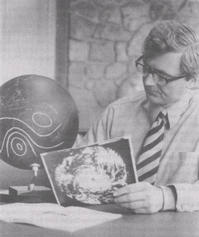


History of Research in the Bureau of Meteorology
Foreword
Preface
Introduction
Chapter 1: Germination and Growth
Chapter 2: Struggle, Competition and Emergence
The Struggle for Recognition
International Involvement
Local Cooperation
The Bureau Goes Solo
Conclusion
Retrospect
Appendix 1: Meteorology Act 1906
Appendix 2: Meteorology Act 1955
Appendix 3: Simpson Report
Appendix 4: Survey Questionnaire
Appendix 5: Bibliography
References
Index
Search
Help
Contact us

Although discussions between Treasury, the PSB and the Bureau continued for a further three years, no agreement was ever reached. During this period, the Bureau had the unwavering support of Priestley and Sir Frederick White, Chairman of CSIRO, both of whom co-authored a report[36] on meteorological research in Australia with Gibbs in 1967.
This document, entitled Prospectus for Meteorological Research in Australia called for the Bureau to be allowed to conduct a scientific research program aimed at improving its own services, and for it to be given the staff necessary to implement such a scheme. CSIRO would undertake research into such fields as would complement those of the Bureau, and the universities should be urged to encourage students already interested in meteorology to continue their studies in this area, so that the numbers of qualified staff could be increased without reliance on immigration. It was also stated that the Bureau should aim to have some fifty scientists capable of undertaking very high quality research within the next ten years. At the same time, numbers at CSIRO should be increased to similar levels.
Support for these proposals was provided by two other reports made during that period. The first, by Herbert Riehl[70], Professor of Meteorology at Colorado State University and a consultant to WMO, agreed that the Bureau was the logical place in which to conduct a meteorological research program in Australia and that it should be granted the necessary staff and funding for its implementation.
The second, entitled 'Report on a Proposed Meteorological Research Programme[80]—written by Dr G. B. Tucker, then the Bureau's Assistant Director, Research and Development, and P. V. Moran, Principal Research Scientist, Department of Supply—undertook a thorough examination of the Bureau's suggested research program by means of a cost-benefit analysis. Using data obtained from the Bureau and elsewhere they estimated that the nation would gain some $100 million from the improvement in Bureau services achieved as a result of a properly instituted program of meteorological research.

The major thrust of the Tucker-Moran report [80] was that the Bureau should as a matter of urgency commence work in the area of NWP and modelling of the general global circulation. These suggestions were in line with thinking within the international scientific community that the understanding of global (and also hemispheric) circulation was the key to improving forecast accuracy, especially in the longer term. There was also the realisation that there were important differences between the circulations of the northern and southern hemispheres, so Australia could not rely on work done elsewhere to improve knowledge of its own part of the globe. This conclusion led to support for the Bureau's contention that it needed to be able to recruit research scientists to carry out this work (Tucker and Moran [80]).
People in Bright Sparcs - Gibbs, William James (Bill); Priestley, Charles Henry Brian (Bill); Tucker, Gilbert Brian; White, Frederick William George
 |
Bureau of Meteorology |  |
© Online Edition Australian Science and Technology Heritage Centre and Bureau of Meteorology 2001
Published by Australian Science and Technology Heritage Centre, using the Web Academic Resource Publisher
http://www.austehc.unimelb.edu.au/fam/0778.html